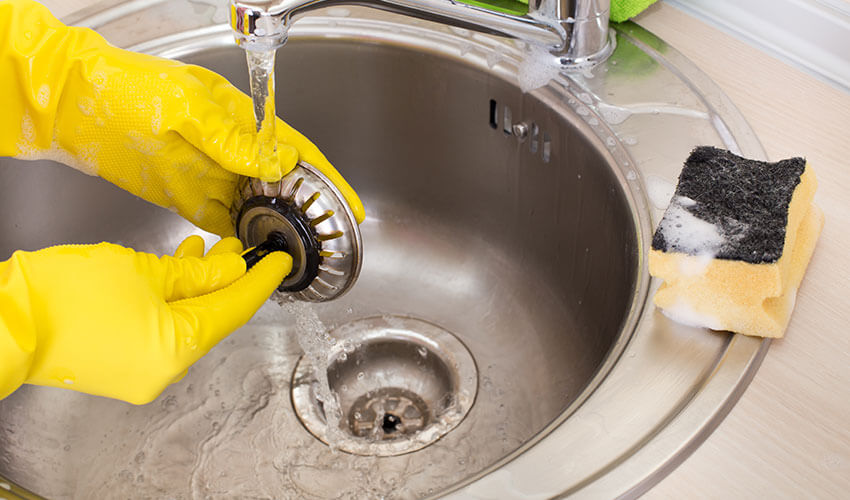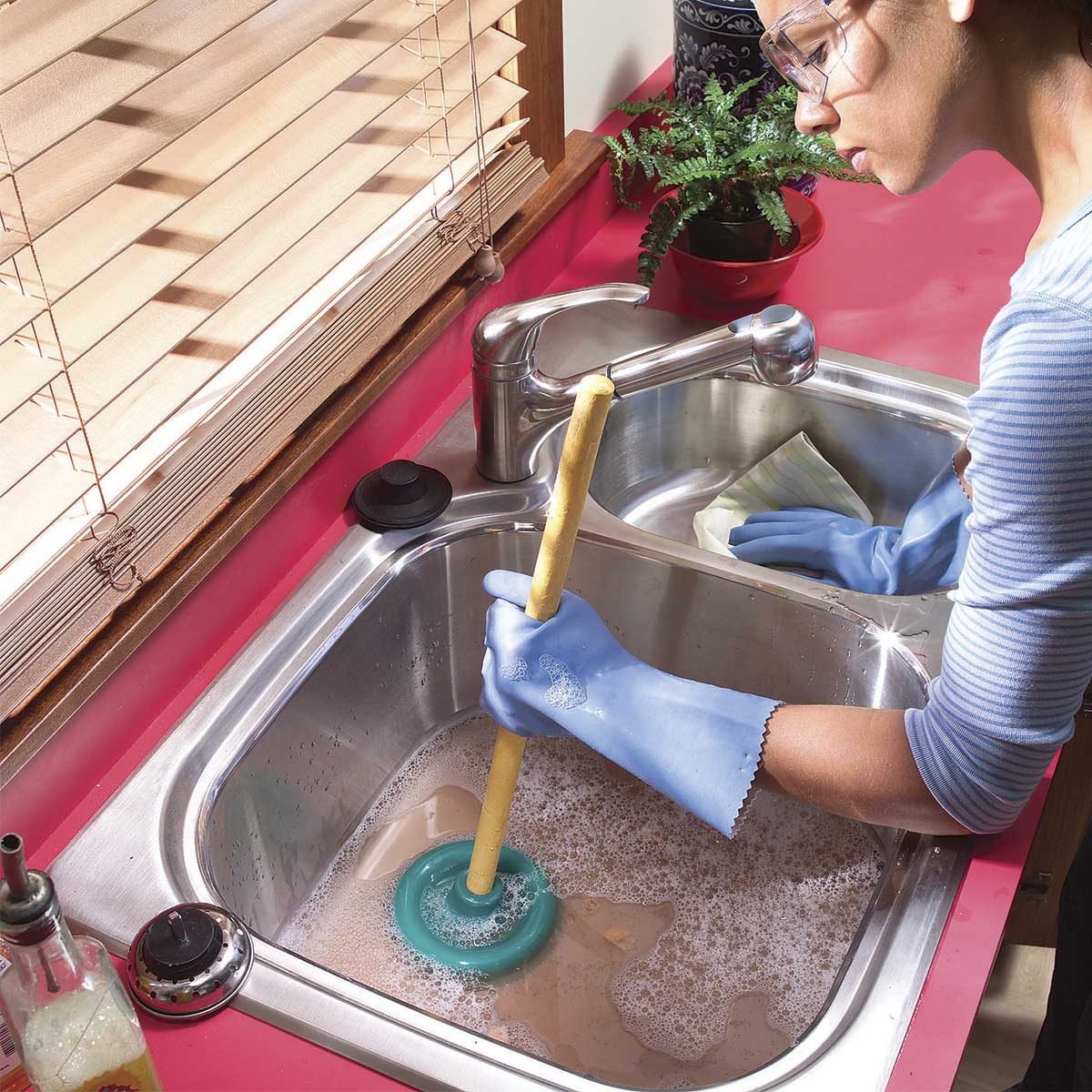5 DIY Secrets on How to Handle a Blocked Kitchen Sink
5 DIY Secrets on How to Handle a Blocked Kitchen Sink
Blog Article
We have discovered this great article involving Common Household Plumbing Issues down the page on the web and accepted it made perfect sense to relate it with you on this site.

In this write-up, we will certainly be looking at 5 easy actions you could take to release your cooking area sink from blockages as well as save you from the discomfort and embarrassment of taking care of a clogged kitchen sink.
Obstructed kitchen sinks are just one of the most typical water drainage problems homeowners face. And what's more, it's a unpleasant as well as really unpleasant sight. Visualize going to the sink to do your recipes as well as figuring out that the drain is obstructed as well as water can not flow down easily.
The majority of clogged up water drainages are triggered by food debris, soap, oil, and fat bits. They obstruct the sink as well as make it hard for water to go down the drain swiftly. While it is appealing to put a call through to the plumbing technicians, there are a couple of DIY hacks you can attempt initially before making that telephone call.
1. Baking Soda as well as Vinegar
Rather than using any type of type of chemicals or bleach, this method is safer as well as not hazardous to you or your sink. Baking soda and vinegar are daily house products used for numerous other points, and they can do the method to your kitchen area sink.
Firstly, eliminate any type of water that is left in the sink with a cup.
Then put a great amount of baking soft drink down the drain.
Pour in one cup of vinegar.
Seal the water drainage opening and also permit it to go for some minutes.
Pour hot water away to melt away other stubborn residue as well as fragments.
Following this straightforward technique could suffice, and you can have your kitchen area sink back. Repeat the process as long as you deem required to clear the sink of this debris entirely.
2. Attempt a Plunger
If the problem is not from the garbage disposal, you can attempt using a plunger. Bettors are conventional home tools for this event, and they can can be found in convenient if you utilize them correctly. A flat-bottomed bettor is most suitable for this, but you can make do with what you have is a commode bettor.
Follow the list below simple steps to use the plunger successfully:
Secure the drain with a rag and also load the sink with some warm water
Place the plunger in position over the drain and also begin diving
Check to see if the water runs easily after a couple of dives
Repeat the procedure until the water drainage is complimentary
3. Possibly it's the Garbage Disposal
In a lot of cases, the blockage may be due to a blockage in the disposal. Changing on the disposal should clear the clog, but it could imply that food fragments or various other compounds are stuck in between the blades if that is unsuccessful. You can attempt to unclog it by transforming the blades manually in a bid to release it. Please ensure not to stick your hands in the blades; they're sharp. Use pliers instead.
If this does not function, you can check out the adhering to option to unblock your kitchen sink.
4. Make use of a Hanger
Using a cable fabric hanger or a plumber's snake if you have one can do the technique. All you need do is straighten out the hanger to go down the drain while you thoroughly choose out the fragments triggering the clog.
Run warm water down the drain hereafter to see just how effective you were.
5. Usage Boiling Water
When confronted with a blocked sink, the first thing you need to try is to put boiling water down the drain. That is about the most straightforward solution to clogged up sinks as well as drainages. Boiling water aids reduce the effects of the fragments as well as particles causing the blockage, especially if it's oil, soap, or grease fragments, and in most cases, it can flush it all down, and also your sink will be back to regular.
Do not attempt this approach if you have plastic pipes (PVC) because hot water can thaw the lines and trigger more damage. You may desire to stick to using a plunger to obtain particles out if you utilize plastic pipes.
Using this method, switch on the faucet to see exactly how water moves after pouring hot water down the tubes. Attempt the procedure again if the blockage persists. Nonetheless, the blockage could be more relentless in many cases as well as need greater than simply boiling water.
Final Words
Trying these couple of tricks could save you the costs of having a plumber check it. But in many cases, a plumber is what we require. In cases where you locate it difficult to unclog the sink even after attempting all these methods, it may be time to leave it to the professionals.
Contact specialist plumbing companies to repair your drainage issues and various other different family plumbing demands.
Obstructed kitchen sinks are one of the most usual drain issues home owners face. Picture going to the sink to do your meals and also locating out that the drainpipe is clogged and water can not move down conveniently.
They clog the sink and also make it hard for water to go down the drainpipe promptly. When encountered with a clogged sink, the initial thing you must attempt is to put boiling water down the drainpipe. Boiling water aids neutralize the bits and debris triggering the blockage, particularly if it's oil, oil, or soap bits, and in lots of cases, it can purge it all down, as well as your sink will certainly be back to regular.
6 Ways to Unclog a Sink Drain
Try Baking Soda and Vinegar
This classic middle school science experiment makes a great method for unclogging any drain. Baking soda and vinegar are gentler on household pipes than harsh chemicals, which can cause damage or corrosion. This natural household alternative to chemical drain cleaners is easy to make, cheap, and non-toxic. Begin by pouring one cup of baking soda down the drain. Follow this with one cup of plain white vinegar. The chemical reaction should create an intense bubbling and fizzing. Wait 15 minutes to allow the baking soda and vinegar to dissolve the clog in your sink and unclog your drain. After the 15 minutes are up, run hot tap water down the drain to clear the rest of the debris out.
Use an Auger
An auger is a standard household item that s designed for unclogging sinks. There are different kinds of augers that are either simple and manual or more expensive and electric. Regardless of the kind of auger (or plumbing snake) you have, the steps are going to be the same. If you have an electric auger, then be sure to read the manufacturer s instructions before beginning. Feed the cable from the auger into the drain opening until you meet resistance. Once the end of the cable reaches the clog, pull some extra cable out of the machine as slack and lock the length of the cable. Begin to turn the crank on the device, and the cable will push forward to drill into the clog. You should be able to feel a change in resistance once the auger has broken through the clog. Retract the auger and flush the sink with hot tap water to clear the rest of the debris.
Try a Wet Vacuum
If you have a shop-vac or a vacuum that works for wet or dry material, then you can try to dislodge the clog in your sink with the vacuum. Always follow the manufacturer s instructions before beginning. Place the hose end of the vacuum over the entrance of the drain and create a tight seal. Turn the vacuum on to the highest setting, and the pressure of the vacuum should dislodge the clog. Be sure the vacuum and drain are sealed together so that the pressure of the vacuum is stronger in the pipe. Run hot tap water through the drain afterward to clear out the rest of the debris.
Prevention is Key
Like most other issues in life, prevention is better than correction. For example, preventing drain clogs can save you the trouble of unclogging them in the future. Keep a drain cover over the drain to catch food pieces and coffee grounds, and be aware of the sorts of things you stick down your drain.
Learning how to unclog a clogged kitchen sink is important household knowledge. However, if none of these methods work, consider asking a plumber to come or rent more heavy-duty drain cleaners.

Do you really like reading up on DIY Plumbing Fixes? Put a remark directly below. We will be interested to see your thoughts about this blog entry. In hopes that you visit us again in the near future. Sharing is good. Helping people is fun. Kudos for your time. Visit again soon.
Address plumbing urgencies. Report this page